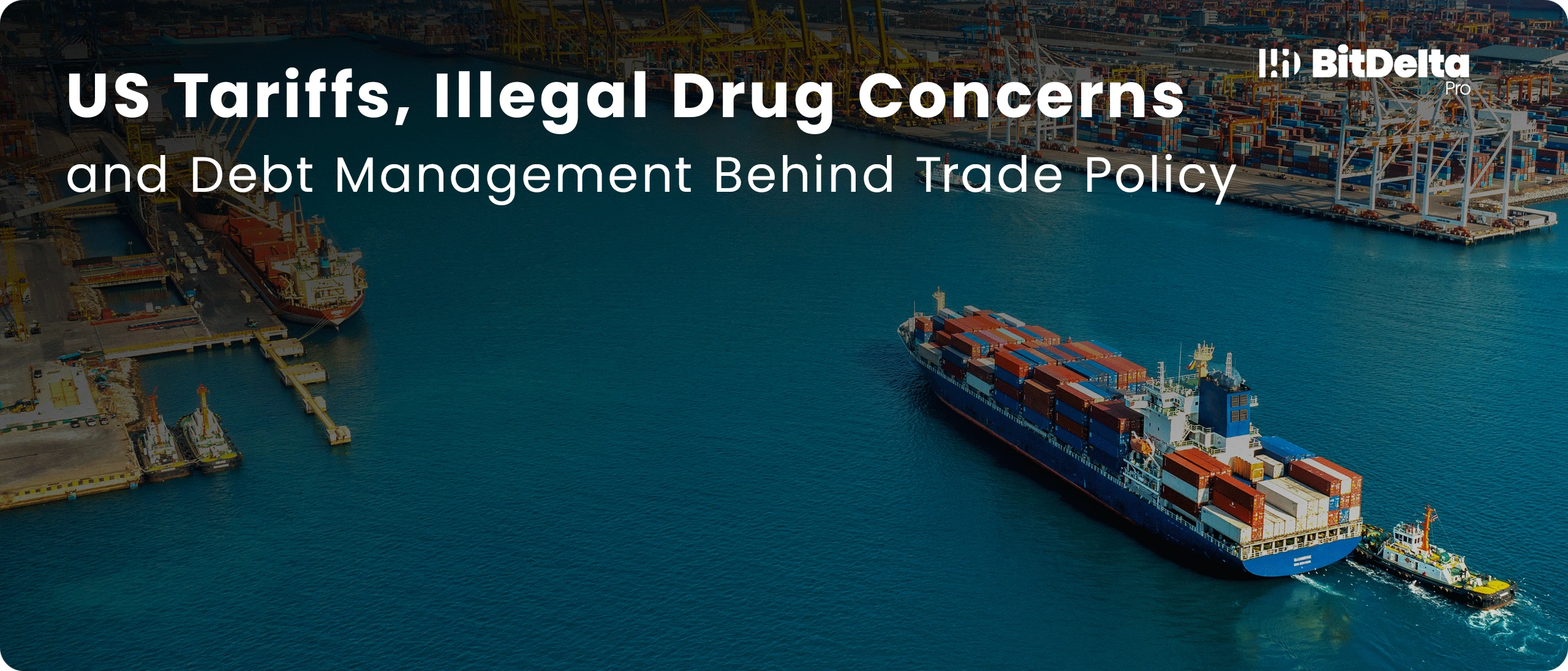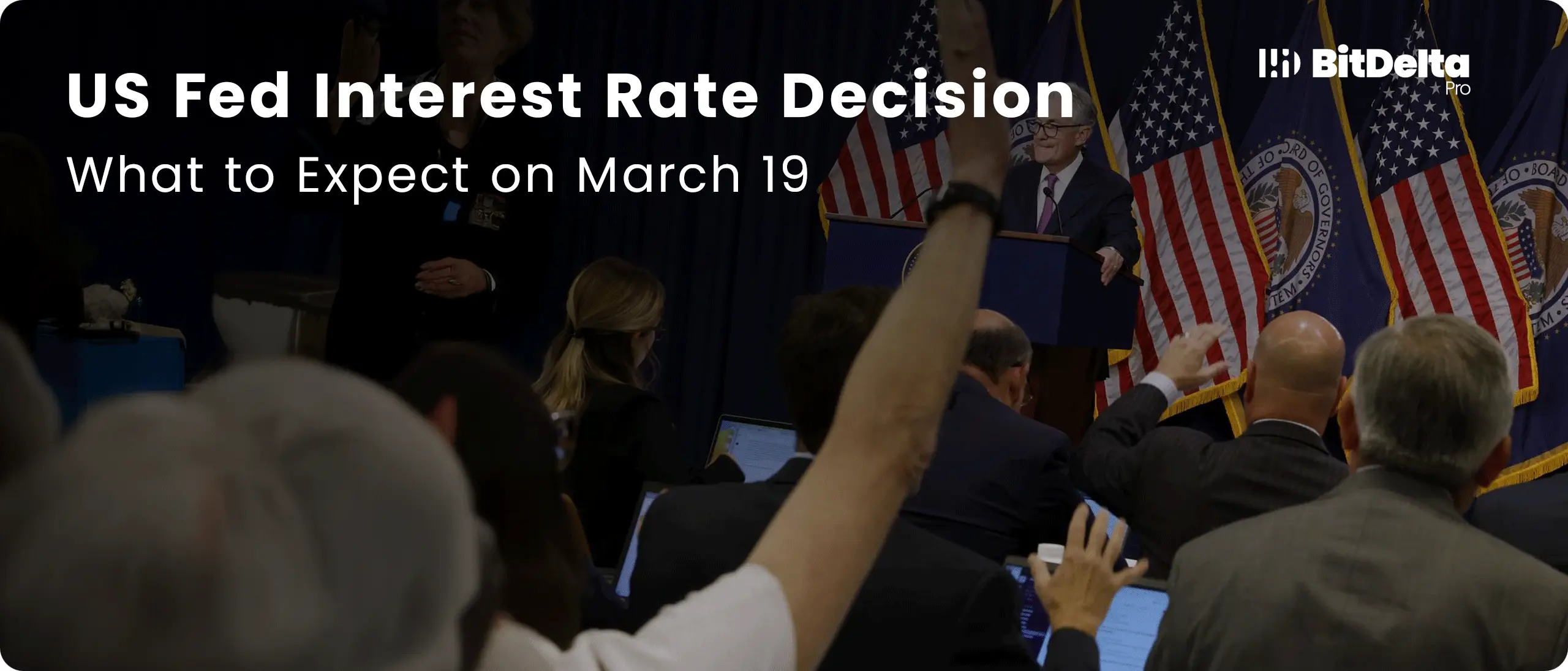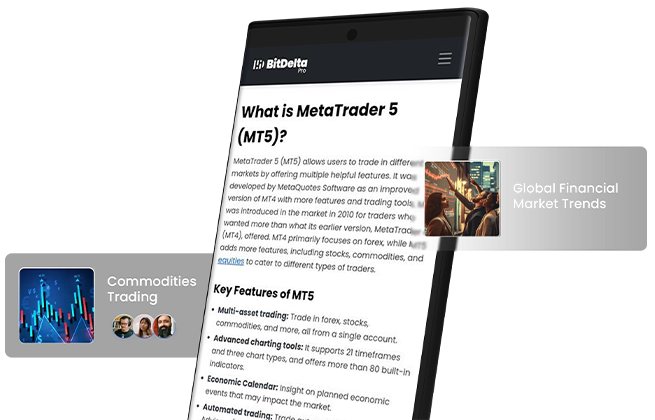US Tariffs, Illegal Drug Concerns, and Debt Management Behind Trade Policy
3 MINS READ
Team BitDelta Pro • 03 Feb 2025

The US stock market faced a significant drop on Monday morning following President Donald Trump’s tariff announcement last Saturday. Investors reacted swiftly to the news, triggering a sell-off in equities and a rush towards safe-haven assets.
Equity Market Reaction
Ahead of the opening bell, US futures indicated a sharp downturn:
- S&P 500 futures fell 2%, signalling broad market concerns.
- Dow Jones futures dropped 500 points, reflecting investor caution.
- Nasdaq futures dropped by 2.4%, particularly affecting tech stocks.
The market sentiment suggests a defensive shift as investors anticipate potential economic disruptions from the tariff measures. The uncertainty surrounding trade relations and broader macroeconomic concerns have led to heightened volatility.
Surge in Safe-Haven Assets
As equities declined, traditional safe-haven assets witnessed a surge in demand:
- Gold prices experienced a significant gap-up at market opening, benefiting from increased risk aversion and concerns over economic stability.
- Silver followed a similar pattern, reflecting its status as an alternative store of value.
- The US dollar appreciated by over 1%, driven by investor demand for safety following new policy announcements. The dollar’s strength underscores confidence in the US currency amid global trade tensions.
The Tariff Announcement: Scope and Rationale
President Trump’s latest tariff decision targets their key trading partners and is set to take effect on February 4, 2025. The breakdown of these tariffs is as follows:
- Canada and Mexico will face a 25% tariff on all goods entering the US. The stated rationale is to address border security concerns and combat the flow of illegal drugs like fentanyl. However, for Canada, the tariff on energy products is limited to 10%, as the US significantly relies on Canadian energy imports.
- China will see a 10% tariff on imports, a continuation of ongoing trade tensions. However, the lower rate compared to North American partners reflects strategic considerations. Trump has previously indicated a roadmap to increase tariffs on China to 60%, aligning with his broader trade policy objectives.
- Panama has not yet been targeted with new tariffs. President Trump has refrained from imposing tariffs on Panama because the country has shown willingness to negotiate on various issues related to trade and the management of the Panama Canal. This diplomatic approach indicates an interest in resolving disputes through negotiation rather than immediate economic sanctions.
Global Reactions
Canada’s Response
- Retaliatory Tariffs: Canada swiftly responded by imposing a 25% tariff on $155 billion of US goods. Prime Minister Justin Trudeau emphasised that these measures would have tangible consequences for American consumers.
- Diplomatic Engagement: Despite the strong response, Trudeau described a “good” phone call with Trump, suggesting ongoing diplomatic efforts to ease tensions.
Mexico’s Position
- Countermeasures: Mexico announced plans to impose retaliatory tariffs but must specify the details.
- Economic Concerns: President Claudia Sheinbaum emphasised the importance of maintaining cooperation but warned of potential economic consequences, including a GDP contraction and a weakening peso should the tariffs persist.
China’s Strategy
- Legal Challenge: China intends to challenge the tariffs at the World Trade Organisation (WTO), arguing that they violate international trade rules.
- Currency Devaluation Speculation: Analysts speculate that China may opt for currency devaluation to offset the impact of tariffs, a move that could further strain US-China relations.
The Real Underlying Issue: Debt Management?
While the tariffs are officially justified on border security and drug trafficking concerns, deeper financial motivations may be at play.
Scott Bessent, US Treasury Secretary under Trump, has made several statements regarding the country’s debt management strategy:
- The US national debt has surpassed $36 trillion, raising concerns over long-term fiscal sustainability.
Proposed Debt Management Plan:
- Reducing government spending.
- Cutting corporate and individual taxes over the next decade, projected to cost the US $4.6 trillion in lost revenue.
- Offsetting this loss by increasing tariff revenue from Canada, Mexico, and China, projected to generate $2.5–3 trillion over 10 years.
Even with these measures, an estimated $2 trillion debt gap would remain, raising the possibility of future tariff expansions—potentially targeting Eurozone countries.
Market Implications and Outlook
The immediate market reaction underscores the economic uncertainty surrounding these trade policies:
- Equities: Increased volatility is expected as investors reassess the risks tied to global trade disruptions. More market volatility may be experienced during the US market open today.
- Safe-Haven Demand: Gold and the US Dollar will likely remain in favour amid heightened geopolitical and economic concerns.
- Inflationary Pressures: Tariffs typically lead to higher consumer prices, which could complicate the Federal Reserve’s monetary policy decisions.
DISCLAIMER
This communication is for informational and educational purposes only and should not be construed as financial, investment, or legal advice. BitDelta Pro does not guarantee the accuracy, completeness, or timeliness of the information provided. Trading in traditional securities (such as forex currency pairs, stocks, bonds, and commodities) carries inherent risks, including potential loss of principal. Users are encouraged to carefully evaluate their financial objectives, conduct their own research, and seek independent financial advice before making any trading decisions. BitDelta Pro is not liable for any losses or damages resulting from actions taken in response to this communication.
Register an Account
Start your trading journey and explore limitless trading opportunities

Sign up today and gain access to global markets!
Register Now



;?>)